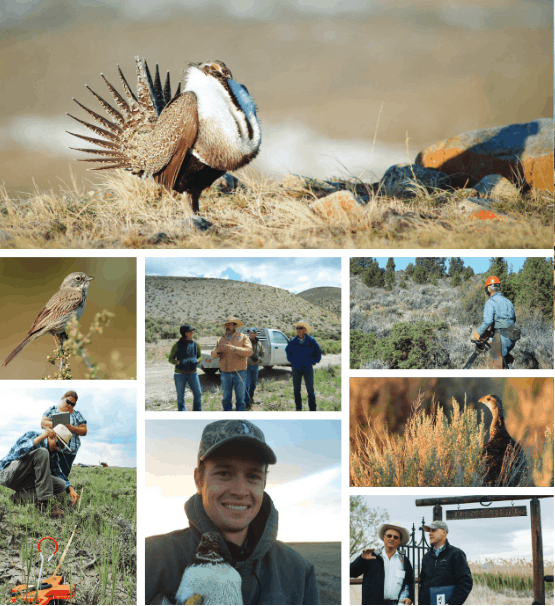
For this part of the story, I am basically quoting my source. Any errors are due to my misunderstanding of what my source told me.
Back when the Obama administration came in, they settled litigation for making listing decisions and developed a schedule.
Secretary of the Interior Ken Salazar, Governora Mead (WY), Hickenlooper (CO), Gary Herbert (UT) and Sandoval (NV) at the Western Governors’ Association sat down with ID and MT (Schweitzer). They agreed to get a plan together to keep the sage grouse from being listed. They formed the Sage Grouse Task Force, which included representatives from BLM, FWS, USGS and state agencies.
Salazar told us that 95% right was going to be good enough, they were not going to go for perfect.
Note: Secretary Salazar had been a DNR Director in Colorado, Senator, and Attorney General in Colorado. and grew up in a ranching community. He had a background of being able to work with others to get compromises made, had relationships and knew the people and how things work, both federally and at the state level.
In the process, two tech teams (science) informed the Conservation Objectives Team, which included the State Wildlife Agencies, so people who really knew those areas and those birds.. Then each State developed a separate plan. Some of the differences among states are that in the Great Plains, for example, they have a four-mile radius around the lek. In Wyoming, grouse can be in hilly terrain so that oil rigs in the draw may not affect them. The groups also identified grassland fire as a problem.
The States turned in their plans to the Fish and Wildlife Service. They included incentives for land conservation and conservation easements, but individuals within the US Fish and Wildlife Service questioned the legal status of conservation easements as regulatory mechanisms, even though those are legal agreements.
So there were all these State plans, and Sarah Greenberger, Jim Lyons (whom FS people may remember from the Clinton Administration), and Dan Ashe had to try to “roll them up”- to write up something coherent for why the diverse landscapes and approaches would add up to a successful national strategy. As part of that effort, some new additional ideas were added to the mix.
Folks from Garfield County, CO did a FOIA and found out that the changes were associated in time with meetings with various environmental organizations, including Pew. One particular idea added during these last changes was the idea of “focal areas”. The States went ballistic.
The Governors sat down with Secretary Jewell and tried to negotiate.
Some continued to feel wronged. Remember, at that time, no one thought that the Republicans would win the Presidency. So when there came to a new administration, some states sent Zinke a letter asking for it to be re-opened. So Zinke announced a review, and a chance to change the plans.
Bernhardt got it right away and we worked with him. After a year and a half of meetings, Colorado decided to weigh in and make a proposal.
So a couple of thoughts..(1) if the politicals hadn’t added new ideas to the collaborative work, folks wouldn’t have “gone ballistic” and ultimately made the changes that are included. I wondered if Ashe, Lyons, and Greenberger might have rethought doing that, in retrospect. I wrote Dan Ashe and Jim Lyons to get their perspectives, but didn’t get replies.
(2) Would Salazar have been more hesitant to add things to the collaborative efforts because of his level of knowledge and trust with the States?
(3) Elected officials and their appointees do get to decide at the end of the day. Some media seem suddenly surprised and horrified that it works that way. As Gov. Freudenthal once said, in some administrations it’s environmental groups influencing, in others it may be the oil and gas folks. Many of us westerners (including Freudenthal) don’t really like the federal abrupt pendulum shifts.
(4) Most importantly, many people you’ve never hear of have been doing the tedious ground work on grouse conservation all these years. At that level, they are the unsung heroes in the background, who try to keep working together and arrive at conclusions that everyone, including the species, can live with. All of us who care about species owe those folks a great debt of gratitude. Note my source’s tone.. there are no enemies, only people and governments to work with for the common good.
Final note: my source said he had given interviews to the WaPo and other major outlets and they never used what he gave them. The stories ended up being all about Trump.
“Elected officials and their appointees get to decide at the end of the day.” Almost! The ultimate deciders are the birds, and I hear they have been declining so far.